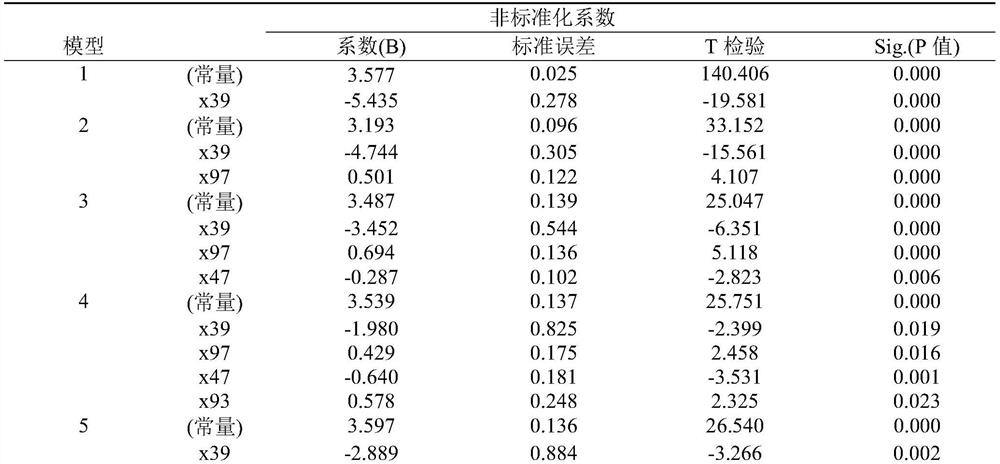Model for detecting cell density of microalgae producing paralytic saxitoxin and as establishment method and application of model
A technology for establishing methods and microalgae cells, which is applied in special data processing applications, measuring devices, complex mathematical operations, etc., can solve the problems of single detection object, poor accuracy, poor sensitivity and repeatability, and cannot be widely used to achieve analytical results High and strong stability effect
- Summary
- Abstract
- Description
- Claims
- Application Information
AI Technical Summary
Problems solved by technology
Method used
Image
Examples
Embodiment 1
[0057] 1. Experimental method
[0058] 1. Cultivation of algae
[0059] The three strains of paralytic shellfish toxin-producing algae used in the experiment were filtered in natural seawater, salinity 28‰, pH 8, sterilized in a high pressure steam sterilizer at 121°C, 15psi for 20min, and formulated with an improved f / 2 formula culture medium. After inoculation, the algal solution was placed at a temperature of 25 °C and a light intensity of 100 μmol m. 2 s -1 , cultivated in an artificial climate incubator with a light-dark cycle L:D=12:12. Three parallel samples of each alga were taken, and 1 mL was sampled at a fixed time every day. After fixing with Luger's solution, the cells were counted under a microscope with a 0.1 mL phytoplankton counting box. Take the experimental algal liquid living sample in the logarithmic growth phase, use the corresponding sterilized f / 2 medium, dilute it to a certain range according to a certain multiple, cultivate in the dark for 15 minu...
PUM
| Property | Measurement | Unit |
|---|---|---|
| wavelength | aaaaa | aaaaa |
| emission peak | aaaaa | aaaaa |
| wavelength | aaaaa | aaaaa |
Abstract
Description
Claims
Application Information
 Login to View More
Login to View More - R&D
- Intellectual Property
- Life Sciences
- Materials
- Tech Scout
- Unparalleled Data Quality
- Higher Quality Content
- 60% Fewer Hallucinations
Browse by: Latest US Patents, China's latest patents, Technical Efficacy Thesaurus, Application Domain, Technology Topic, Popular Technical Reports.
© 2025 PatSnap. All rights reserved.Legal|Privacy policy|Modern Slavery Act Transparency Statement|Sitemap|About US| Contact US: help@patsnap.com



